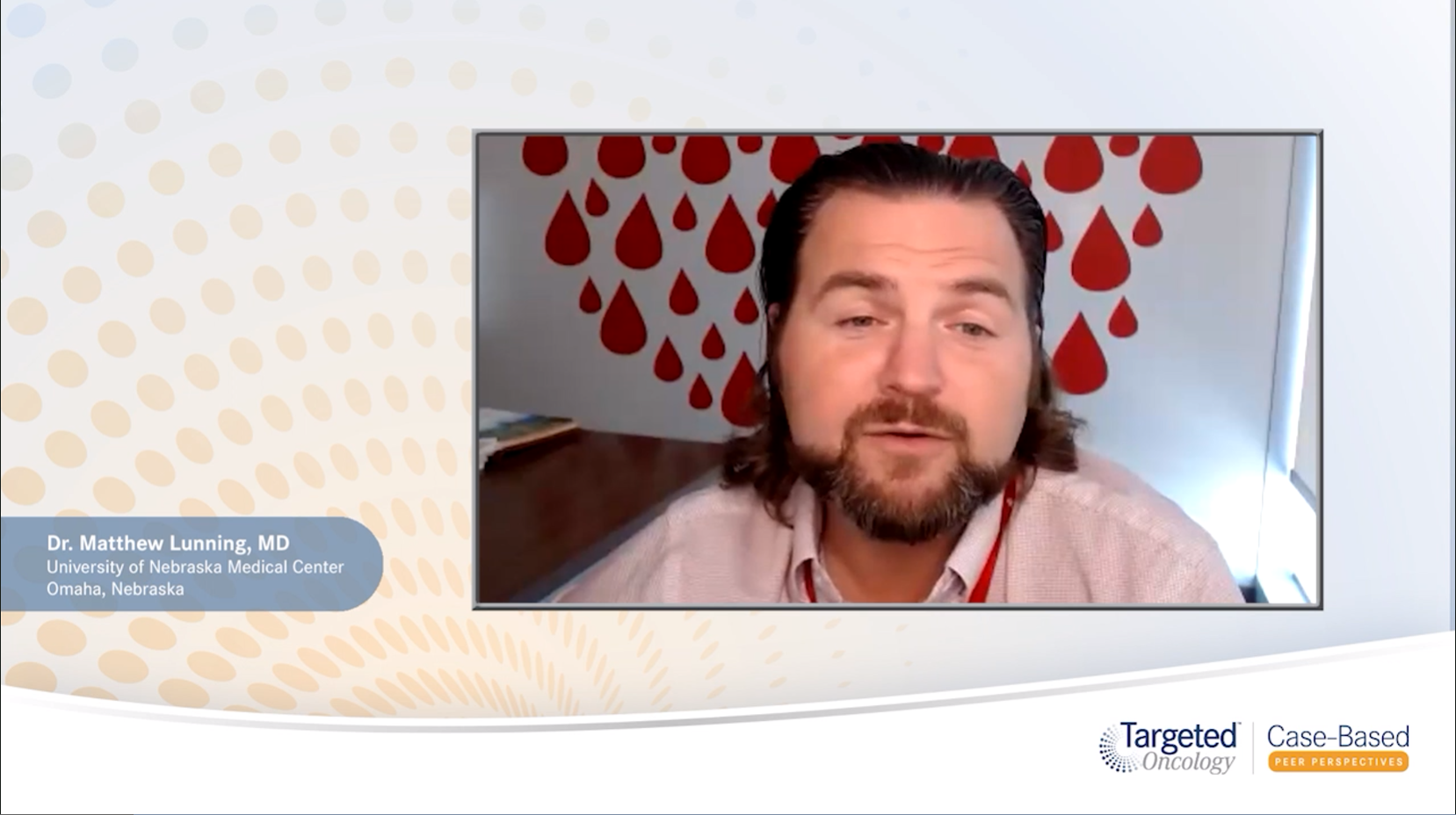CAR T: CD19-Targeted Therapy in R/R DLBCL
Ali McBride, PharmD, MS, BCPS, BCOP: With the evolution of new CD19-targeted therapies, specifically the CAR [chimeric antigen receptor] T-based treatments, we really have changed the current paradigm of treatment. These are usually reserved for patients who are able to tolerate these therapies. There are severe adverse effects as well that we have to mitigate in our inpatient or outpatient settings, depending on where we utilize these therapies.
With CAR T-cell therapy in the relapsed/refractory setting, these patients have very good overall response rates. Based on the type of CAR T right now, based on data, we’re looking at about 50% to 82% overall response rates. But correlating complete response ranged by about 30% to 50% on average, looking at the 2 clinical studies which brought those indications to light. Those have led to a revamping of how we treat patients in the setting.
However, that does not mean every patient can get those therapies. We know there are certain issues with CAR T. For example, cost continues to be a remnant discussion ongoing throughout the actual course of discussion for looking at that patient for treatment options. We also have to address, can that patient tolerate that therapy? In the previous question, we actually alluded to the discussion on who can get a transplant, so this deals with transplant-ineligible patients or transplant-eligible patients.
In this setting, we have to do the exact same thing. Can they tolerate a CAR T therapy? Some of these CAR Ts can be very toxic. They have severe adverse effects, we often see CRS [cytokine release syndrome]. There may be other adverse effects as well across the board, but the key is mitigating this. The treatment is ongoing without these major adverse effects ensuing. We do a great deal of work addressing that either in the inpatient setting or the outpatient setting, depending on where you’re getting that.
In many cases, we actually are seeing emergence of outpatient CAR T, probably pushed a little by the cost, so that’s showing you how cost does have an influence here. Also, we have to address timing, the actual time to get the cells because of apheresis and then infuse those cells back again. So we do have some things we have to address up front when looking at CAR T. CAR T is not a panacea, but it does provide an increased amount of access to patients with better outcomes as well.
We’re always looking at other options for treatment with the CAR T therapies, and this is 1 that really has changed the current treatment schedule for patients in those transplant-eligible sections.
This is the discussion about CAR T: the actual processing of the cells, and also having those cells infused back. That’s always been a very good question to bring up. Usually right now, it takes about 4 to 6 weeks, depending on the schedules, the manufacturing sites, and depending on the CAR T therapy as well. In those cases, if there’s a prolonged delay, or if you’re putting your patient on study in between, there may be some variances on when you get that infusional therapy into the patient.
There may be looking at maybe a month or 2 based on that time period. That can be an issue or looking at the delay, so you may have to bridge, which then means you have to give another chemotherapy during that period of time before they see CAR T, let alone the condition regimen we use for lymphoid depletion as well. From this standpoint, there can be a chance of a relapse in that period during that actual time, to the apheresis to the type of infusion of the cells. That can be a concern as well during that delay or during that interval period.
This is an evolving discussion, and this is the fact of how do you hospitalize these patients for CAR T? How do you actually look at and address the diagnosis of CRS? In these cases, for some CAR T, you actually always have to put the patient in an inpatient setting and evaluate and monitor for potential CRS. That’s going to be a common question. The commonalities between these therapies and the CAR T space is having that administered in an inpatient setting for some of the CRSs.
In 1 case, we have seen 1 CAR T being utilized more in the outpatient setting. The incidence of CAR T based CRS is actually based on timing. One has earlier onset for CRS than another, so you can use that data to push outpatient CAR T in these cases. But that does not mean you just give the actual CAR T outpatient and say, “Have a nice day.” What that means is, you have to bring that patient back every day and have them checked for fluids.
You also have to check them for neurotoxicity, check for ICANS [immune effector cell-associated neurotoxicity syndrome] in this case, and also look at CRS-based adverse effects. You do have to closely monitor these patients and also have a triage workflow in the evening—because you’re not going to have the clinic open during the day—so if they do have CRS, they can go directly to the ED [emergency department]. Having that stepwise fashion is important in the outpatient setting. However, the predominant utilization of CAR T is in the actual inpatient setting.
Transcript edited for clarity.
Zilovertamab Vedotin/R-CHP Elicits High Complete Response Rate in DLBCL
Published: December 8th 2024 | Updated: December 8th 2024The addition of zilovertamab vedotin to R-CHP (cyclophosphamide, doxorubicin, prednisone, rituximab) resulted in a 100% complete response rate in patients with previously untreated DLBCL.
Read More









